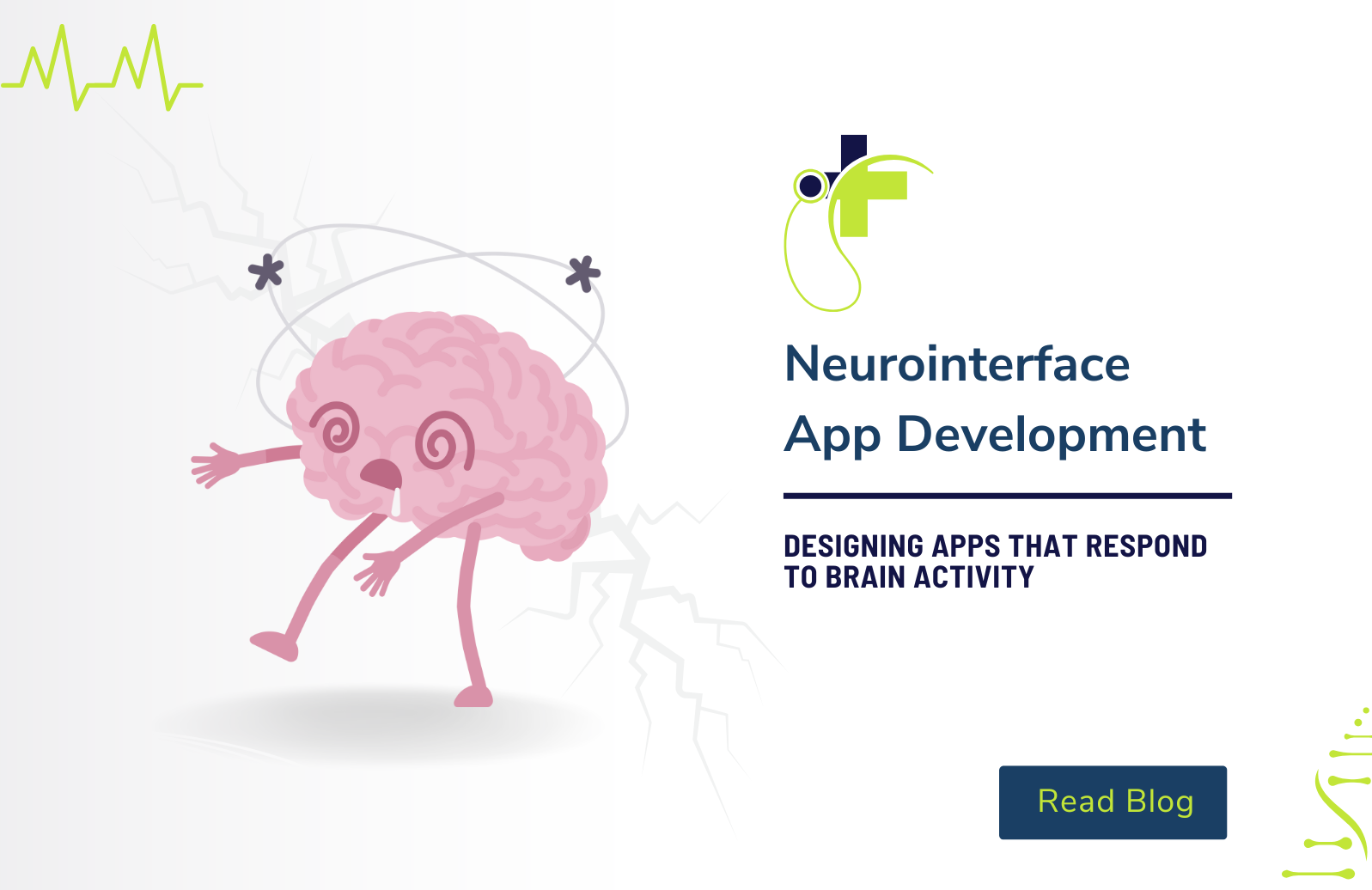Neurointerface App Development: Designing Apps that Respond to Brain Activity
Introduction
In recent years, the Synergy of neuroscience and technology has led to the establishment of many exciting fields in such areas as neurointerfaces. For these cutting-edge applications, engaging with the best mobile app developers is crucial to bring complex neurointerface concepts to user-friendly platforms. These systems enable the exploration of direct communication between the brain and external devices. Neuro-interfaces are cutting-edge innovations transforming human-technology interaction. To ensure seamless user experiences, expert mobile app design services are essential for translating intricate brain activity data into intuitive interfaces. Neurointerface apps make use of brain activity data and create personalized immersive experiences which makes this technology more innovative, and responsive, and provides positive feedback. For the developers understanding the brain and computer interaction has always been a quest and unlocking the potential of this field is now possible with neurointerfaces. In this blog, we will discuss and break down the fundamentals and foundations of neurointerfaces exploring their real-world applications, and highlighting ground-breaking examples such as Emotiv Insight, Focus Band, and NeuroSky.
The Potential of Neurointerface Apps
Neurointerfaces bridge the gap between human cognition and digital systems by interpreting brain signals. To achieve this effectively, leveraging the skills of the best mobile app developers is vital for creating robust and reliable applications. Neurointerfaces rely on highly advanced techniques like electroencephalography (EEG) and functional near-infrared spectroscopy (fNIRS) to monitor brain-related activity and variables. Neurointerface technology offers a varying range of applications across many fields. To make these applications accessible, high-quality mobile app design services are required to create intuitive and engaging user experiences. For example- in the healthcare sector neurointerface apps have proven to be a game changer by monitoring mental health and providing real-time insights into the person’s current emotional state. Neurointerface apps help individuals manage conditions such as depression, anxiety, and lack of focus by tracking their brain activity and offering personalized coping strategies. The healthcare professionals also use the data to understand and support the patients. Moreover, the gaming industry has also started to embrace neurointerfaces by creating more diversified experiences and analyzing the player's mental state by enquiring into their focus while they were playing or what level of excitement they had at that time. These games changes the dynamics of the mind. The experiments were also done to adjust the difficulty levels, pacing, or even in-game interactions to keep the players and their minds engaged throughout. In the area of education, these apps are used to assess the cognition load, enhance the learning experience, strategize new learning methods, and how improve the focus of the students. Apart from all those above-mentioned applications neurointerface technologies also enhance the accessibility of the individual with disabilities, boosting their focus and productivity; offering them innovative ways through which they can meaningfully engage with their personalized digital experience of the app.
Examples of Neurointerface Apps
NeuroSky
NeuroSky, a trendsetter in neurotechnology, develops innovative products that gather brainwave data to improve focus and meditation. Partnering with the best mobile app developers ensures these complex technologies are translated into user-friendly mobile applications. It is designed to keep the immersive user experience in mind. The technology allows user to manage and keep track of their mental status in real-time scenarios. The neurosky app can provide insightful details into the brain activity which ultimately helps users to achieve Deeper understanding and relaxation during the meditation. Many users have reported improvements in their concentration and stress management levels which highlights the effectiveness of the application in enhancing holistic mental well-being.
Emotiv insight
Emotiv Insight, a cutting-edge neurointerface application, provides users with a deeper understanding of their mental status. Utilizing professional mobile app design services is crucial for creating an interface that effectively presents this complex data. It is widely used in the gaming and mental wellness sector because the particular app analyses the activity of the brain and personalizing the experience of the user and engagement system. In the gaming sector, this app utilizes the play mode which is based on the cognitive and mental load of the player making their experience more real and responsive. Apart from this, in the entertainment sector as well this application serves as a powerful tool for mental wellness that tracks the emotional status and receives personalized recommendations for improvement in the mental well-being of the user. Many users have appreciated the interface of this app as it helps them recognize their cognitive patterns and allows them to make more informed decisions about mental health.
Focus band
Focus Band is another neurointerface app which is designed specifically for the athletic and result-driven training of sportspersons. The app allows brain activity data to help users achieve their holistic mental state for peak performance in the games. The app also provides real-time feedback which helps them focus and relaxes them before the big game. This also helps athletes to adjust their mental approach when during training, in-competition, and out-of-competition. Users have reported the improvements in performance, helping them achieve clarity in mental well-being suggesting that this app is effective not just in theory but in real life as well. The integration of neurotechnology into sports training represents a significant advancement in the optimization of human performance.
Challenges in Neurointerface App Development
Neurointerface has immense potential but several challenges need to be addressed as well. One such major challenge lies in its technicality i.e. the accuracy of the interpretation of the data gathered from brain activity. The variability in data from individual brain patterns makes it highly difficult to introduce a standardized universally applicable and acceptable algorithm. Moreover, there are certain device-related limitations such as the sensor's quality, and noise-to-signal ratio which directly impact the data reliability. There are ethical consideration that also comes into play i.e. privacy concerns regarding the type of collection and the storage of the brain data as the information is highly sensitive and personal and the issues pertaining to this need to be addressed to gain the user's trust. Because data security breaches could lead to unwanted access to the personal information of the users. The other challenge lies in the experience of the user when they are using the app. Developers need to create seamless, inclusive interfaces, especially for diverse users. This necessitates working with the best mobile app developers who understand accessibility and user-centered design. Finally, the app also requires a multidisciplinary collaboration with other stakeholders for successful development by combining expertise from neuroscience, software development, and UI/UX design which can lead to an effective user-friendly approach. Therefore, by working in synergy with these professionals solutions can be created that will not only just meet the technical requirements but will also develop an application that can be customized and personalized to individual needs.
Future Trends in Neurointerface App Development
The future trends in neurointerface application development are highly promising. Advancements in accuracy and functionality will make neurointerface apps more accessible. To capitalize on these trends, companies must partner with the best mobile app developers who stay ahead of technological innovations. With the upcoming integration of artificial intelligence (AI) and machine learning (ML), neurointerface applications will play a significant role allowing the application to learn from the interactions happening in real time based on the user experience and choices, ultimately improving their experiences. Moreover, the potential this app is ready to provide by integrating with other fields such as virtual and augmented reality presents a very exciting opportunity to see. This technology is ready to create an immersive and holistic environment that adapts to users' mental status, driving engagement and interaction like never before. As the field advances further, we can expect to see groundbreaking apps that can change the neurointerface landscape and the way we engage with technology and communicate with each other.
Conclusion
To conclude neurointerface applications mark a revolutionizing step in technology and neurosciences, neurobiology, cognitive sciences, and neuropsychology. As this field evolves, developers have the chance to design an app that will not just enrich the user experience but also functionality with adaptive changes. The influence of the neuro interface technology extends across multiple industries- from healthcare, education, mental health, and entertainment to paving the way where it will be attuned to understanding human needs.









